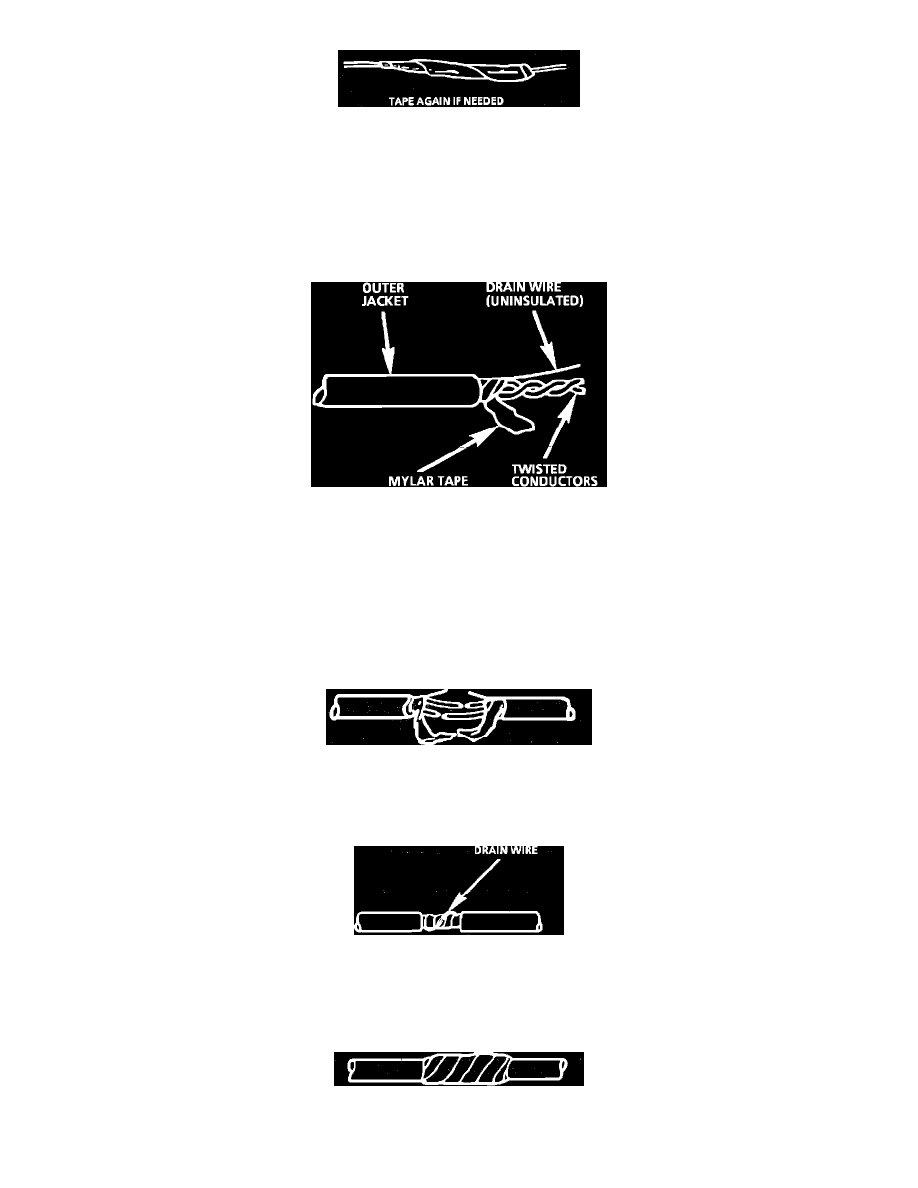Storm L4-1800cc 1.8L DOHC (1993)

Fig. 12 Proper Second Taping
6. Tape the Splice - making sure the tape covers the entire splice. Roll on enough tape to duplicate the thickness of the insulation on the existing
wires. Do not flag the tape. Flagged tape may not provide enough insulation, and the nagged ends will tangle with the other wires in the harness.
If the wire does not belong in a conduit or other harness covering, tape the wire again. Use a winding motion to cover the first piece of tape.
Splicing Twisted/Shielded Cable
Fig. 15 Twisted/Shielded Cable
Twisted/shielded cable is sometimes used to protect wiring from electrical noise (stray signals). For example, two-conductor cable of this
construction is used between the ECM and the distributor. The image above shows an example of a breakdown of twisted/shielded cable
construction.
PROCEDURE
1. Remove Outer Jacket - and discard it. Be careful to avoid cutting into the drain wire or the mylar tape.
2. Unwrap the Tape - but do not remove it. The tape will be used to rewrap the twisted conductors after the splices have been made.
Fig. 16 The Untwisted Conductors
3. Prepare the Splice - by untwisting the conductors. Then, prepare the splice by following the splicing instructions for copper wire presented
earlier. Remember to stagger splices to avoid shorts.
Fig. 17 The Re-assembled Cable
4. Re-Assemble the Cable - after you have spliced and taped each wire. Rewrap the conductors with the mylar tape. Be careful to avoid wrapping
the drain wire in the tape. Next, splice the drain wire following the splicing instructions for copper wire. Then, wrap the drain wire around the
conductors and mylar tape.
Fig. 18 Proper Taping
